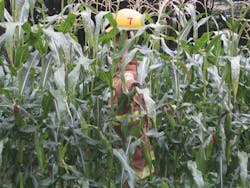Study: Healthy Foods a Difficult Find for Firefighters
Firefighters are trained to operate and maintain a variety of equipment used to do the job, but how much training goes into how to maintain their bodies and more importantly, what they put into them?
In the latest firefighter fatality reports from both the USFA and NFPA, heart attacks remain the leading cause of on-duty deaths.
Researchers from the Johns Hopkins Bloomberg School of Public Health recently completed a study in partnership with the NVFC focusing on reducing risk factor associated with sudden cardiac deaths among firefighters.
The findings were released during a conference call on Tuesday as part of International Fire/EMS Safety & Health Week.
Thirty-Seven fire stations throughout Maryland were invited to take part in a series of focus groups on how to improve health and wellness. From those groups, the study took shape.
"The goal was to create informed prevention planning that would really work and speak to their needs," Assistant Professor Shannon Frattaroli said. "The study really benefited from the input from firefighters throughout the process."
The participants included around 100 firefighter from both volunteer and combination departments in 12 counties.
The focus groups posed the question: "How can the fire service better promote wellness among fire service personnel?" and while the answers were "all over the map," Frattaroli said that there was one topic that seemed to dominate the feedback.
"We really heard a whole lot about food," she said. "A lot of the firefighters said they had a difficult time accessing healthy foods."
Many of the firefighters expressed frustration in trying to have a healthy meal, saying that food options at their station often times consist of snacks from vending machines and donuts and pizza that find their way in. To make matters worse, many said that the options outside the firehouse weren't much better as nearby restaurants are often of the fast-food variety.
Many also said time management plays a big role in their inability to eat healthier foods.
"We heard a lot that the on-call nature of the job makes it difficult to plan and eat a healthy meal," Frattaroli said. "Firefighters are really busy and those fast food options provide and cheap and quick way to fill up."
With that information, the researchers aimed to develop an intervention program that would that would take into account firefighters' capacity to make good choices as well as their ability to access healthy options.
"We sought to provide an intervention that would provide the firefighters with tools and resources and teach them relevant skills," she said.
They worked with eight firehouses to develop the intervention program.
"We wanted to let people know that you can cook healthier in a quick way," Assistant Professor Keshia Pollack said.
Cooking demonstrations were done at the fire stations and one crew was shown how to cook spaghetti squash in the microwave.
The stations also were provided with equipment such as Foreman grills so they could cook food and info was provided on local farmers markets and community agriculture programs.
"It's really critical to give people hands-on tools," Pollack said. "It's one thing to give them a recipe, but another to show them how to make it."
Many participants said their eating improved mainly because of what they learned during the cooking demonstrations and education sessions and 90 percent said they tried new food because of the program.
They also were given information on healthier vending machine items and discounts on healthier menu items for the firefighters were obtained at local eateries.
Each station was provided copies of the book "Eat This, Not That!," NVFC's Heart Healthy Firefighter Cookbook and a subscription to Men's Health and Women's Health.
Seventy-five of the firefighters also took part in a "Biggest Loser" competition in which the average weight loss across the fire stations was compared during the intervention period of December 2010 and June 2011 with date collected at two month, six months and 12 months.
Average weight loss ranged from 2.41 lbs to 15.73 lbs across the participating stations with the Goodwill Fire Company in Queen Anne's County winning the competition.
Of the 75 participants, 83 percent said their health improved during the competition.
While only 48 percent said that the food environment at their stations changed, 72 percent said it changed at their homes.
"The firefighters were taking what they learned during this study home with them and changing behavior there," Associate Professor Larry Cheskin said, noting that it can be very difficult to alter the culture inside the station and that the change has to start from the top.
"It's very important to engage the leadership to foster change within the fire department," he said. "You can't just tell people something and expect them to change. You need to change the environment."
Cheskin said that all departments can launch similar efforts at their own stations focusing on healthier eating.
"Educating them about nutrition and healthy eating is very important," he said. "It's not that they are purposely eating poorly, they just don't know what they should be eating in some cases."
